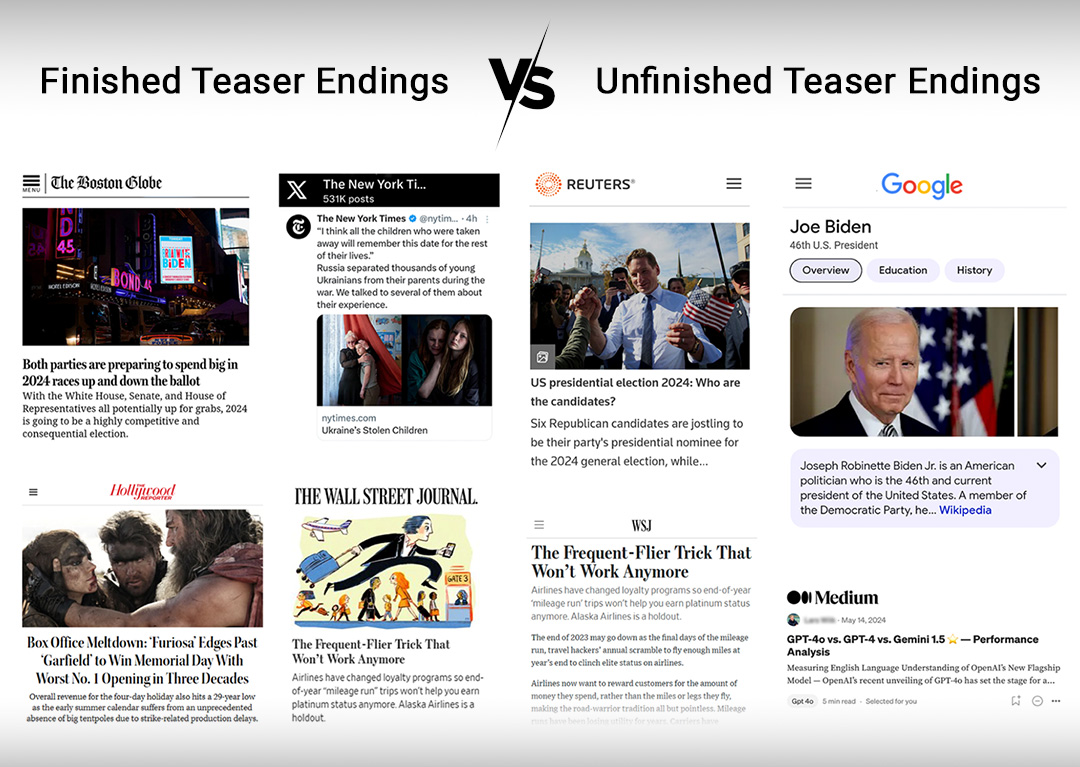Unfinished Teasers: A Double-Edged Sword
In today’s digital age, content providers constantly seek ways to attract consumers’ attention and encourage them to engage with their content. One popular strategy is using teasers—short previews designed to pique interest.
Using teasers aims to induce curiosity and increase revenues from digital content, either directly through access fees or indirectly through increased traffic and ad revenue.
But what happens when these teasers are intentionally left unfinished, cutting off mid-sentence? Do they pique curiosity or just frustrate the audience? We explored this very question, revealing that consumers’ reactions to unfinished teasers for digital content, such as articles, videos, or music clips, largely depend on whether the content is free or paid.
The Power of Curiosity—But Only When It’s Free
When consumers encounter unfinished teasers for free content, such as a video or an article available without charge, they are more likely to engage with it. The teaser creates a curiosity gap, prompting a desire to know how the story ends or what the full content has to offer. Since there is no cost to satisfy this curiosity, consumers are typically happy to click through and explore the content.
The Problem with Paywalls
However, the scenario changes when the content is behind a paywall. If a teaser cuts off just as it is getting interesting but requires payment to see the rest, many consumers react negatively. Instead of feeling curious, they might feel manipulated—as if the company is using a cheap trick to extract money. This reaction can lead to avoidance of the content altogether, even if there was initial interest.
Our consequential choice study suggests an economically meaningful decrease in revenues, with article purchases dropping from 33.3% in the finished teaser ending condition to 18.3% in the unfinished teaser ending condition.
Implications for Marketers
For those in the business of creating and promoting digital content, these insights are crucial. Unfinished teasers can be an effective tool to drive engagement when the content is free. However, if the content requires payment, this strategy might backfire, potentially turning away customers rather than enticing them to buy.
In today’s market, where consumers are increasingly aware of and sensitive to marketing tactics, understanding their perceptions is key. While curiosity can be a powerful motivator, it is also a double-edged sword—one that must be wielded with care.
Disclosure: This blog post was created with partial assistance from AI tools.
Full reference: Mandler, Timo, Gerrit P. Cziehso, Tobias Schäfers, Ann-Kristin Kupfer, and Alexander Mafael (2024), “This Article Is… Consumer Reactions to Unfinished Teasers For Digital Content,” Psychology & Marketing, forthcoming. https://doi.org/10.1002/mar.22098
Cite for: Teasers, teasing effects, curiosity, knowledge gap, persuasion knowledge, manipulative intent, digital content, consequential choice, galvanic skin response, facial expressions, iMotions Affectiva




